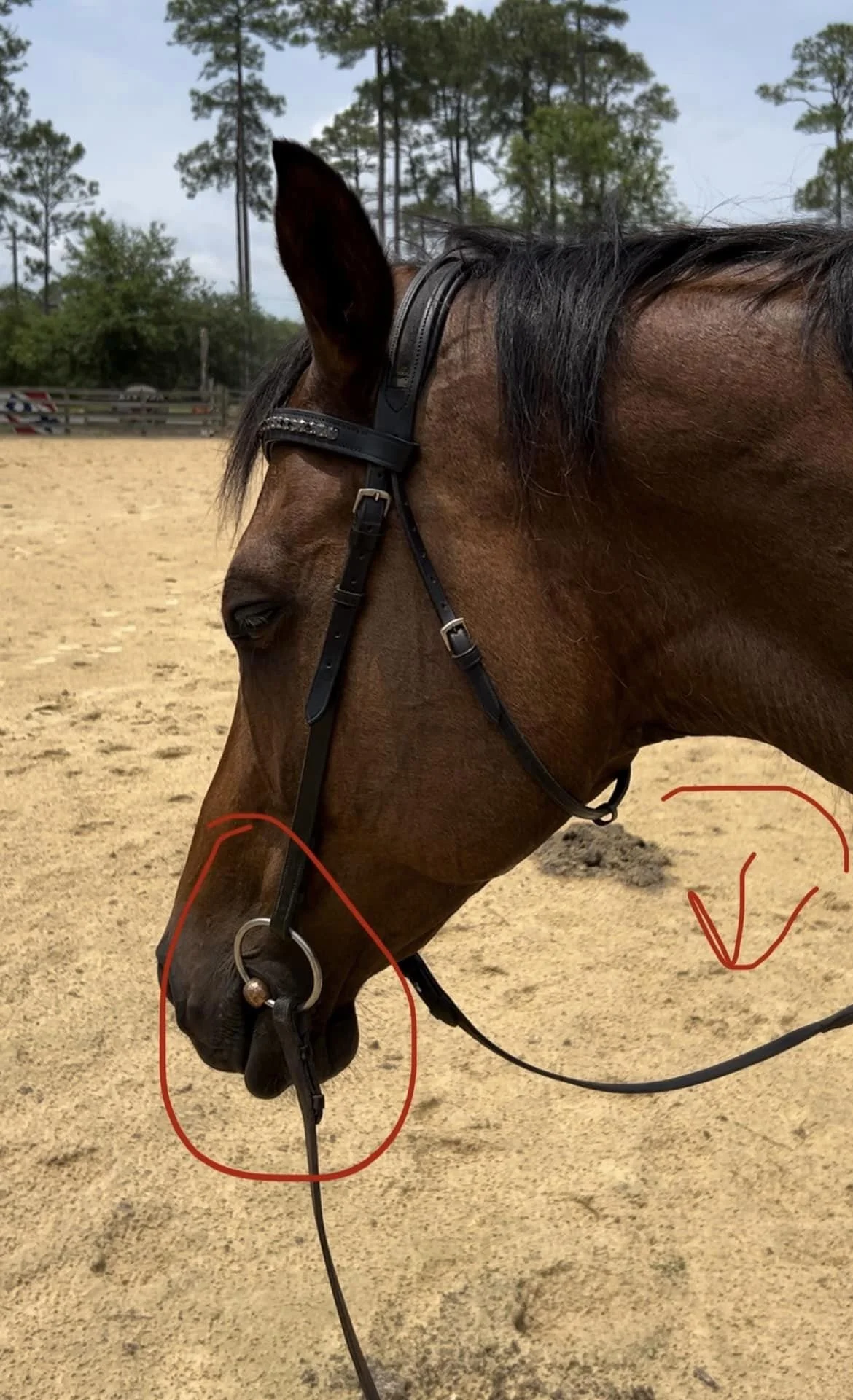A Brief Overview of Jaw Releases
What’s the hype about jaw releases?
Jaw releases actually have very little to do with the jaw itself, other than the lack of clamping once released. Instead, jaw releases have a lot more to do with a horse’s tongue.
When horses become tense, they clamp their mandible to their skull. As a result, they aren’t having an active, happy, soft mouth and the tongue is not moving. This lack of movement also inhibits movement of the rest of the horse through the hyoid apparatus. So, if the horse is relaxed though the tongue, many other muscles in the horse’s body are also able to relax and thus function properly in training.
So the ability to release the jaw quite literally helps to unlock the rest of the horse’s body.
Lightness is not only a trait of classical equitation but of many other disciplines and traditions. A goal of all training is to have mental and physical lightness in the horse. Often times the mental and the physical are intertwined.
If the horse lacks mental relaxation, they will clamp their jaw and thus the rest of their body becomes tense. So by asking one of the first places that becomes tense during stress for a horse to release, then the horse can begin to release tension throughout other areas.
That being said, the horse has to also be mentally prepared to relax. With a horse in a very clear stressed state that is caused by stimuli in their environment, teaching the horse to mentally relax is the goal first.
Above image is prior to the jaw relaxation. Pictured is a tense jaw and tense underneck muscles.
Pictured is after the jaw relaxation. The horse’s jaw is relaxed and so are the underneck muscles. The horse also has a visibly relaxed expression.


